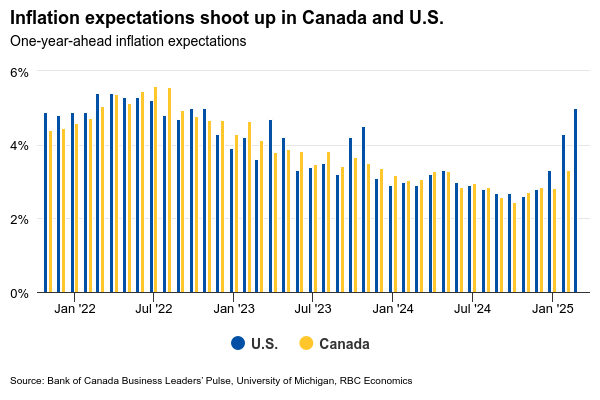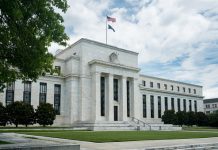Data in the coming week will be watched closely for impact from trade headwinds to prices in Canada and the U.S., following recent tariff announcements and progressively softening sentiment data.
It is still likely too early to see significant increases in final U.S. consumer prices from tariffs. We anticipate a slower 0.2% month-over-month rise in both headline and core consumer price index measures in March. This will nudge both annual core and headline inflation down to 3% and 2.7%, respectively. Core goods inflation is likely to hold steady, still underperforming services sector inflation—at least for another month.
But there are already signs that tariffs have begun to push up costs earlier in the production cycle. The latest ISM manufacturing survey suggested the share of U.S. firms facing higher prices rose drastically in March. “Dramatic increases” were noted especially for steel and aluminum products thanks to related tariffs. We expect goods inflation in the U.S. may heat up in the months ahead.
In Canada, focus will be on the Q1 Bank of Canada Business Outlook Survey (BOS) conducted during February. The survey asked key questions on business sales outlook, capacity constraints, investment and hiring intentions as well inflation expectations amid escalating trade tensions.
Indeed, the Q2 results will likely be a stark contrast to the last iteration in Q4 when business sentiment was buoyed by large and consecutive interest rate cuts from the BoC and early signs of a recovery in domestic demand toward the end of last year. We expect the near-term outlook dimmed while businesses scaled back hiring and investment plans, especially for those in the trade-exposed manufacturing industries.
Businesses’ expectations for input cost and inflation pressures likely both rose, mirroring the early survey released alongside the last BoC interest rate announcement that showed plans among businesses to pass on a large chunk of tariff related cost increases to consumers.
Moving forward, the BoC and U.S. Federal Reserve will be watching trends on inflation, expectations and business pricing behaviour (expected frequency and size of future price adjustments) very closely to ensure tariff-related price increases do not turn into continuing high inflation.














